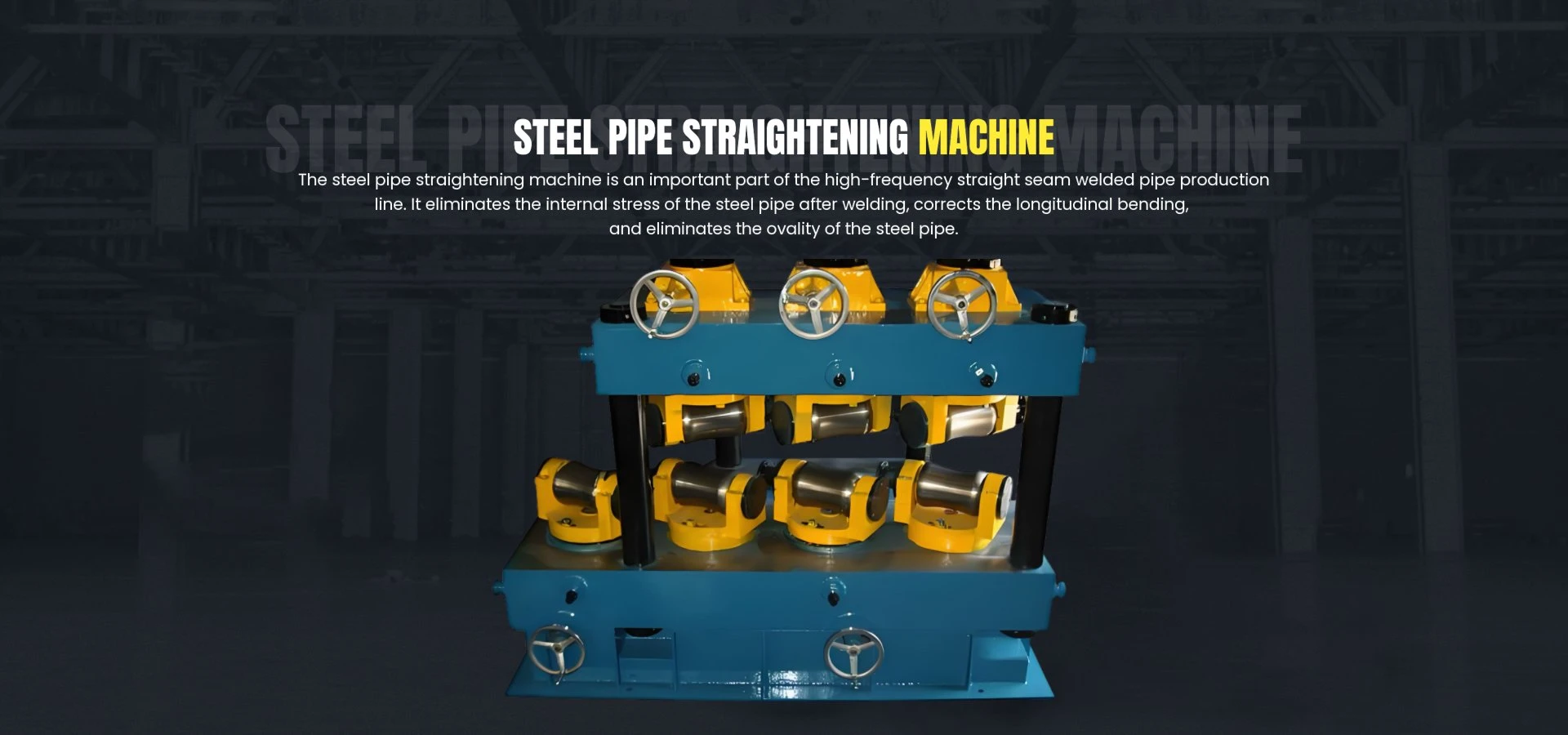Steel Bar Straightening Equipment for Enhanced Precision and Efficiency in Metal Processing
Understanding Steel Bar Straightening Machines
Steel bar straightening machines play a critical role in the manufacturing and construction industries. These machines are designed to straighten steel bars, ensuring they meet specific dimensions and tolerances required for various applications. This article delves into the significance, functionality, and operational aspects of steel bar straightening machines.
Importance of Steel Bar Straightening
Steel bars, widely used in construction, infrastructure, and manufacturing, often come in a rolled or bent state. The irregularities in their shapes can lead to complications during installation and can compromise the structural integrity of projects. Straightening enhances the bar's usability, ensuring that it fits securely into place and reacts predictably under load.
Straightening is particularly crucial in reinforced concrete applications, where steel bars are embedded within concrete structures. Properly straightened bars ensure effective load transfer between the steel and concrete, enhancing the overall strength and durability of the construction. Additionally, straightening can maximize the efficiency and reduce wastage of materials, which is vital in today’s cost-conscious market.
How Steel Bar Straightening Machines Work
Steel bar straightening machines operate on a straightforward yet effective principle. The process typically begins with the feeding of coiled or irregularly shaped steel bars into the machine. The key components of these machines include a series of rollers, a straightening mechanism, and an advanced control system.
1. Feeding Mechanism The raw steel bars are fed into the machine, where they are positioned for the straightening process. Automatic feeders are often utilized to streamline this operation, ensuring that bars are fed in consistently without manual intervention.
2. Straightening Rollers The steel bars pass through a series of rollers that apply precise pressure to bend them gradually into a straight line. The design of the rollers allows for multiple passes, which can handle different sizes and types of steel bars as needed. The adjustment of roller positions is critical, as it determines the extent of straightening achieved.
3. Control Systems Modern steel bar straightening machines are equipped with advanced control systems that monitor parameters such as pressure, speed, and alignment. These systems help maintain quality and consistency in the straightening process. Operators can adjust settings as necessary to accommodate varying bar diameters and materials.
steel bar straightening machine

4. Cutting Mechanism After straightening, many machines include a cutting mechanism that trims the bars to required lengths. This functionality helps in reducing additional handling and processing steps, making the workflow more efficient.
5. Quality Inspection After processing, the straightened bars undergo quality inspection to ensure they meet the required specifications. This is often facilitated by integrated measurement systems that check for straightness, length, and dimensional accuracy.
Benefits of Steel Bar Straightening Machines
The advantages of utilizing steel bar straightening machines are manifold
- Increased Efficiency Automated straightening saves considerable time compared to manual methods, allowing manufacturers to increase production rates.
- Improved Quality Control The consistent pressure and control over the straightening process lead to higher quality results, minimizing defects and wastage.
- Versatility These machines can handle various types of steel bars, allowing manufacturers to adapt to different project requirements without investing in multiple types of equipment.
- Cost Savings By reducing manual labor and improving yield, companies can significantly lower production costs and maximize profit margins.
Conclusion
Steel bar straightening machines are essential tools in modern manufacturing and construction. By enhancing the quality and usability of steel bars, these machines contribute significantly to the structural integrity of buildings and infrastructure. As technology continues to evolve, we can expect even more advanced features and capabilities, further streamlining processes and improving efficiencies in the industry. Investing in reliable steel bar straightening machines is undoubtedly a step forward for any business aiming to thrive in today’s competitive market.
-
High Frequency Straight Seam Welded Pipe Production Line-BzZhou Xinghua Machinery Equipment Manufacturing Co., LTD.|line pipe steel&welded gas pipeNewsJul.30,2025
-
High Frequency Straight Seam Welded Pipe Production Line-BzZhou Xinghua Machinery Equipment Manufacturing Co., LTD.|High Precision&Automated SolutionsNewsJul.30,2025
-
High Frequency Straight Seam Welded Pipe Production Line - BzZhou Xinghua Machinery Equipment Manufacturing Co., Ltd.NewsJul.30,2025
-
High Frequency Straight Seam Welded Pipe Production Line-BzZhou Xinghua Machinery Equipment Manufacturing Co., LTD.|Precision Welding, High EfficiencyNewsJul.30,2025
-
High Frequency Straight Seam Welded Pipe Production Line|BzZhou Xinghua|Precision Welding&EfficiencyNewsJul.30,2025
-
High Frequency Straight Seam Welded Pipe Production Line - BzZhou Xinghua|Precision Engineering&EfficiencyNewsJul.30,2025


